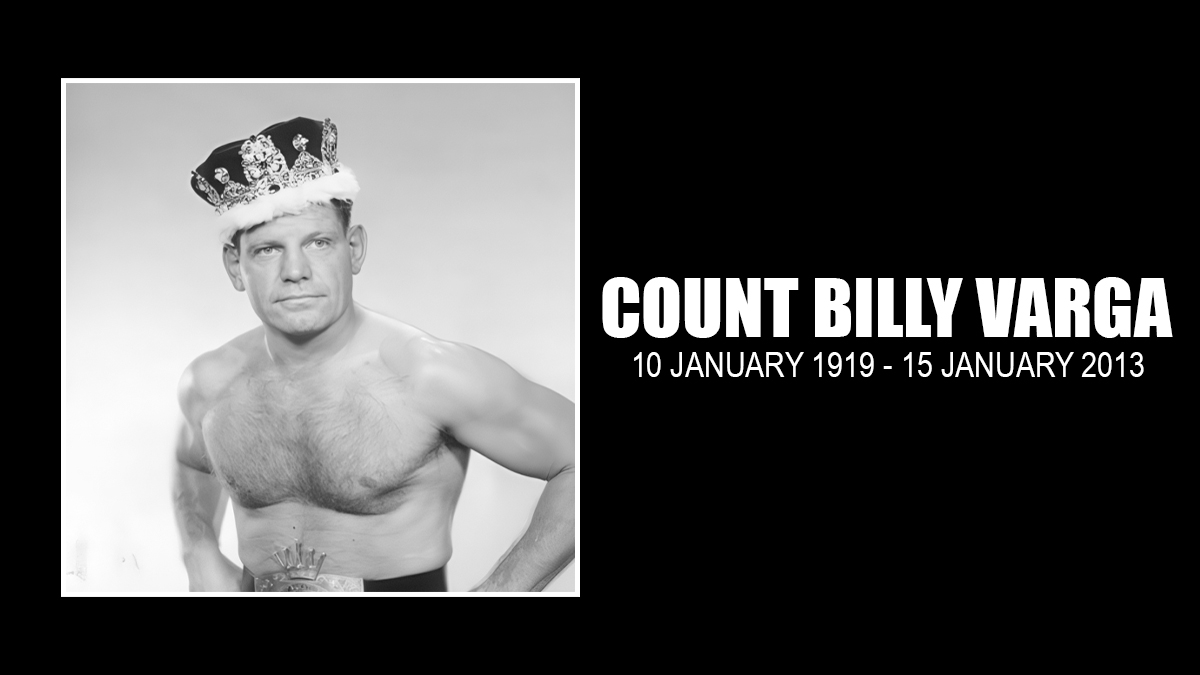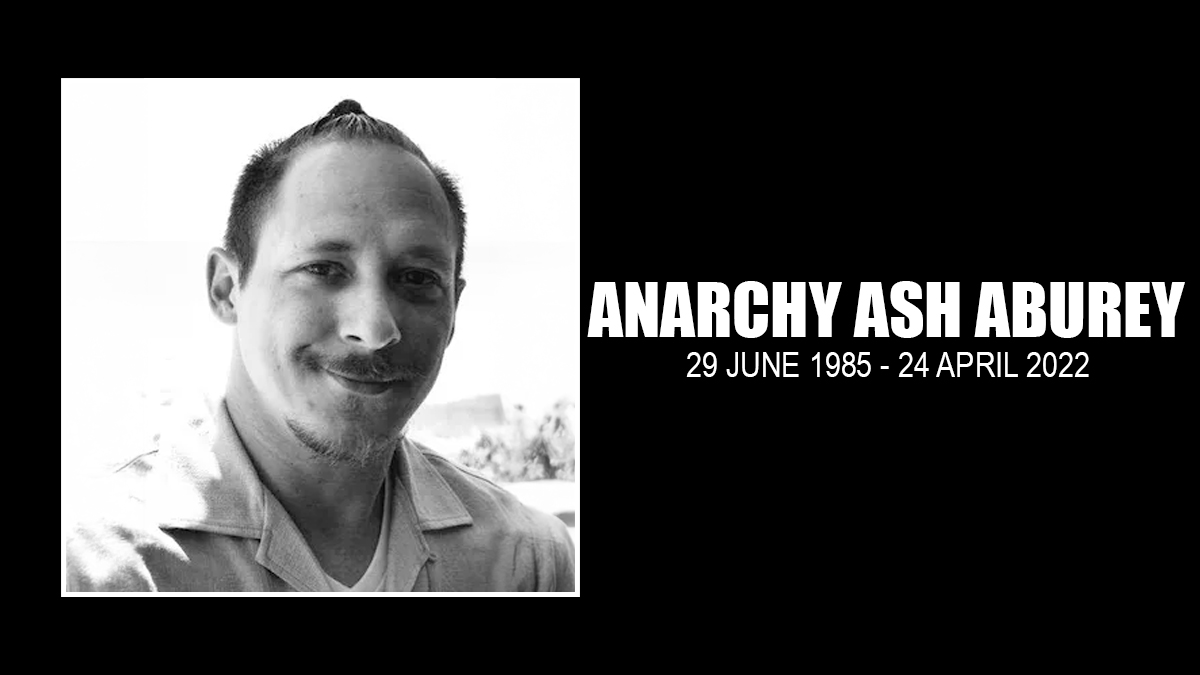Though Count Billy Varga, who died Friday night at age 94 from complications of Alzheimer’s, was a wrestling star in his own right, especially in southern California, his most-seen bout came not against another wrestler, but against Herman Munster.
It was the eighth episode of The Munsters, in November 1964, and the family patriarch, the Frankenstein-like Herman, becomes a pro wrestler called The Masked Marvel in an effort to make some cash for his son Eddie’s college education. Varga is Strangler Murphy, who benefits from Herman being so nice and gullible, and unable to take advantage of his opponents.
The sitcom was so relatively new that in a November 3, 1964 letter to promoter Jack Pfefer, Varga described the show and sent a publicity shot. “The name of the show is the ‘Munsters.’ I end up wrestling Frankenstein. Thought you would get a kick out of it,” he told Pfefer, one of wrestling’s greatest behind-the-scenes characters.
The intertwining of wrestling and show business was a long affair for Varga, whose in-ring accomplishments, while notable, perhaps pale in comparison to his movie and television work. And, while wrestling helped make the second-generation wrestler a name, it didn’t give him a pension as acting did.
“Billy Varga was a nice guy and good performer. He had a good thing going with Hollywood, doing television and movies,” said Dick Hutton in a 2001 interview with Wrestling Perspective.
Born in Cleveland to Joe and Rose Varga on January 10, 1919, Billy grew up around the wrestling business thanks to his Hungarian-born father. The elder Varga was a successful amateur wrestler in Europe, which he continued upon his arrival in New York. He turned to pro wrestling in 1914 as Count Joseph Varga, and wrestled until 1936, when he started refereeing.
“I was five years old when dad started to teach me to be a professional wrestler; that’s the year we moved to California,” recalled Billy Varga in a 1967 newspaper article, adding that he was at the YMCA learning more by age 11. He would graduate from Hollywood High and studied for two years at the University of Southern California.
His success in the family business came quickly, and the 5-foot-11, 200-pounder won a version of the world’s light-heavyweight title at the age of 17 from Wild Red Berry in December 1941. He took time off to serve his country in the Navy (Boatswain’s Mate First class), and returned to pro wrestling in 1947, when he reclaimed the light-heavyweight title from Danny McShain.
By 1950, he was notable enough to get a decent write-up in Guy LeBow’s book, The Wrestling Scene: “Billy Varga’s wrestling savvy has paid off plenty in the form of a nice wife, two boys and a palatial home in the Hollywood hills which is called ‘Varga-Var.’ Anybody choosing a list of the outstanding wrestlers in the U.S.A. would have to choose Billy, who is pretty prominent for his use of the abdominal stretch, which he employs as if he had the copyright on it. Billy was born in Cleveland, the son of Joe Varga, former European wrestling star. Married seven years ago, Billy now has two boys. Varga’s best weight now is 200 to 208 pounds. Each year, Varga, a skiing enthusiast, spends three weeks on slats in the Yosemite.”
“Varga is a fast grappler who uses a lot of tricky holds,” explained an early story. He would later be respected for his technical skill, though he wasn’t the top pro’s pro, explained Pepper Martin, who wrestled him on occasion. “We had a good match and he was a very difficult man to work with,” explained Martin, who also got into acting. “He had a very awkward style.”
By the late-’50s, he seemed to have morphed into a semi-permanent heel, perhaps aided by the “Count” title, which was claimed to be from the House of Hapsberg. The elder Varga apparently conferred the title upon his son in 1959.
In a 1959 interview in Wrestling Revue, Billy addressed the difficulties of being a second-generation wrestler. “[A]s a kid I was always afraid of being unable to live up to Dad’s reputation. It worried me until Dad took me aside, one day. It was just after he had taught me his invention, the ‘salto’ hold — the one that had helped him get into Ripley’s Believe It or Not column — and I was pretty discouraged by the time he finished. ‘Billy,’ Dad said, ‘with this hold and a few others, I won three world wrestling titles in one night, middleweight, cruiser and heavyweight. Probably nobody will ever do that again — not even you. Are you going to let this wreck your life?’ Before I could answer, he went on, ‘Because if you are, tell me now and we’ll forget all about wrestling.'”
The Los Angeles-based North American Wrestling championship seemed locked on Varga’s waist for more than 10 years. Promotional bumpf talked about the “$7,000 diamond studded belt.”
It was essentially a vanity belt, not booked out of any office.
In a March 17, 1963 letter to Pfefer, Varga promised to bring the prize along. “By the way if you have any big extravaganzas in the future, the Count will defend his American Heavyweight championship for the pleasure of the patrons,” he wrote.
By the early 1970s, his in-ring career had wound down, though he could hardly have been called a full-timer for much of the previous two decades, given his frequent movie and TV work.
“This last month has been one of my busiest,” Varga wrote Pfefer on November 19, 1965. “Between working in a picture, leasing property, doing a charity show on TV, buying my son new amplifiers (three of them) one cost $1000.00, I’ve really been running. To add to that we had a big rain storm last week, and three of my store rentals had leaking roofs.”
The list of film and TV Varga worked on is an impressive body of work, starting with early wrestling-related movies Bodyhold(1949) and Alias the Champ, later wrestling-related movies such as Mad Bull (1977) and Grunt! The Wrestling Movie (1985). There were movies where he was not a wrestler too, including roles as cooks, guards, and announcers, such as in the award-winning Raging Bull (1980).
Varga’s connection between Hollywood and the grunt-and-groan crew made him a key figure in the Cauliflower Alley Club, an organization bringing together wrestlers, boxers, stunt men and actors. He was a regular at the gatherings, often monopolizing the conversations.
His wife, Rosabelle, who died in 1992, was a dancer and nicknamed “Rosebud.” They had three sons, Billy, Courtland and Royce, all of whom preceded him in death. He is survived by five grandchildren, Billy Varga the 3rd, Lisa Varga-Hamrick, Eain Varga, Tania Varga and Joseph Varga.
The Count had been in hospice care since the fall of 2005, suffering from Alzheimer’s disease. He passed on Friday, January 11, 2013.
A memorial service celebrating Billy’s life will take place on Saturday, January 19 with a viewing at 11 am and the funeral at 1 pm at Holy Cross Cemetery 5835 West Slauson Ave. Culver City, CA 90230 For information (310) 836-5500 or go to www.holycrossmortuary.com to view his obituary.




